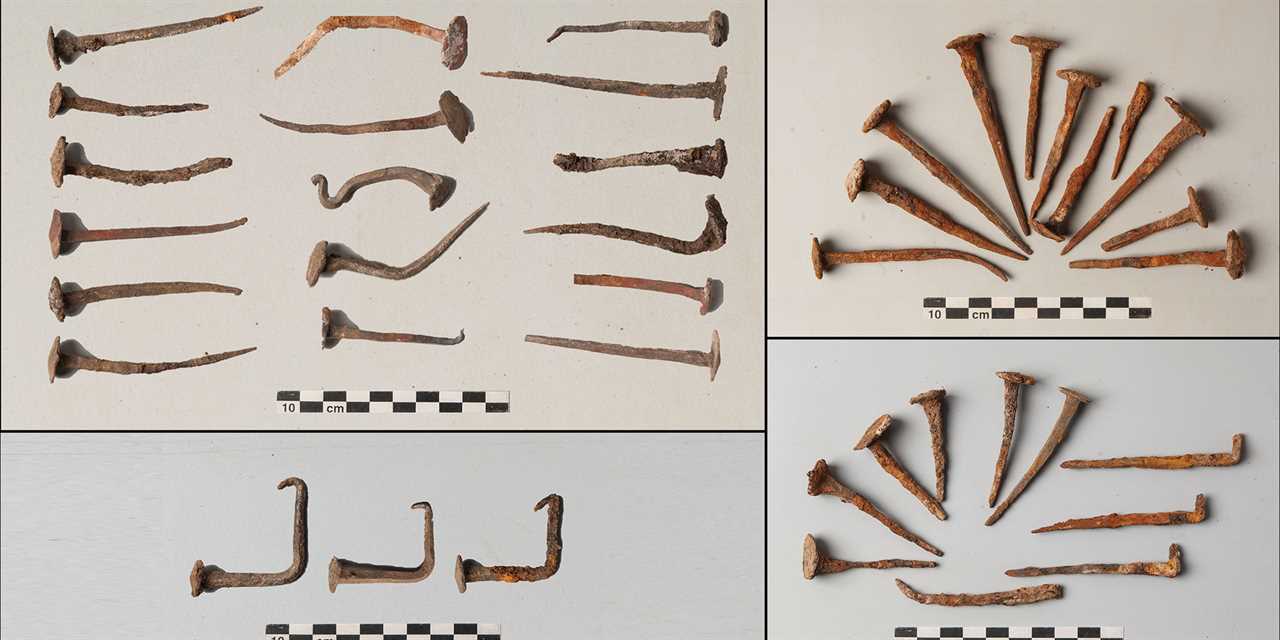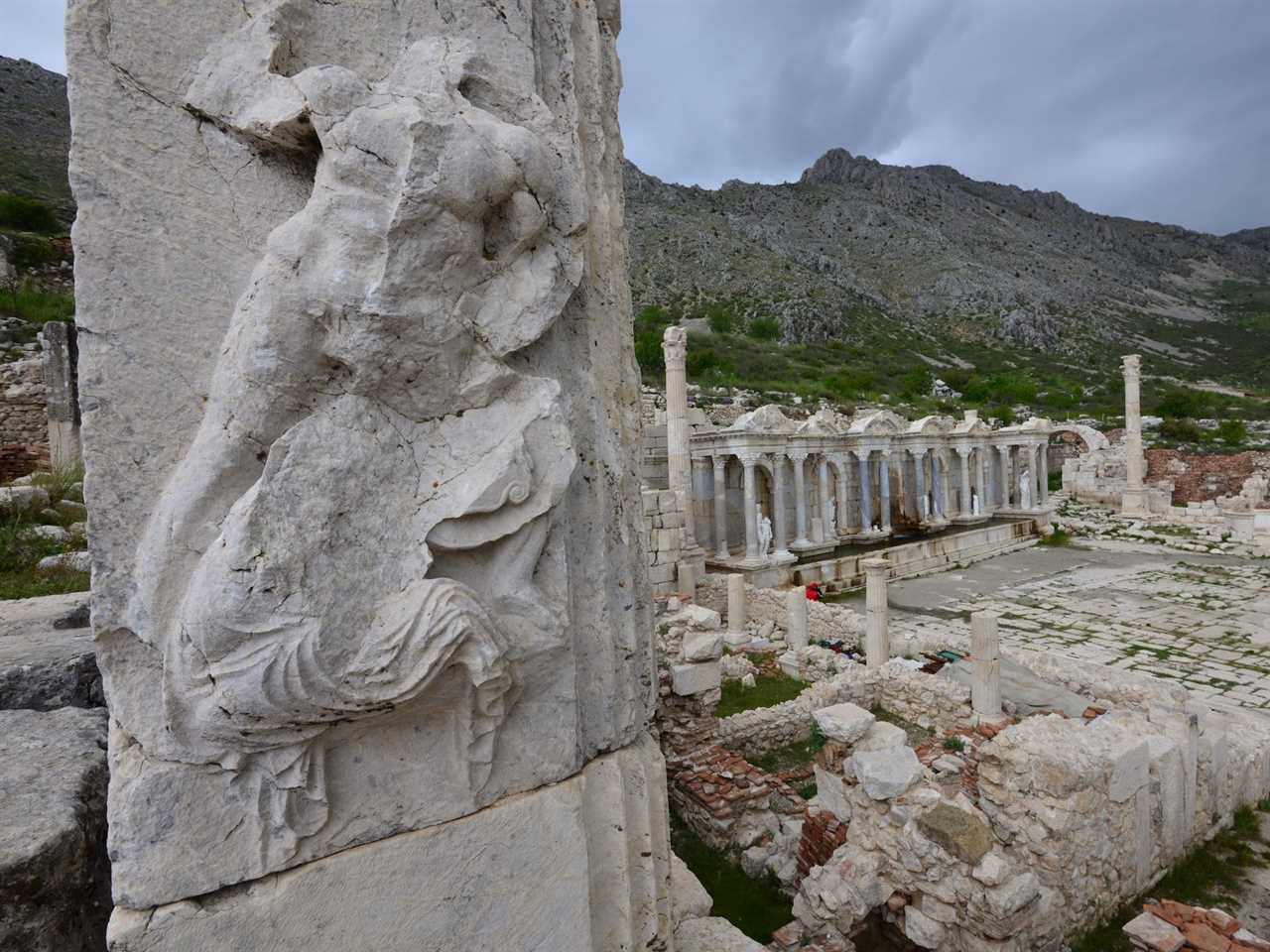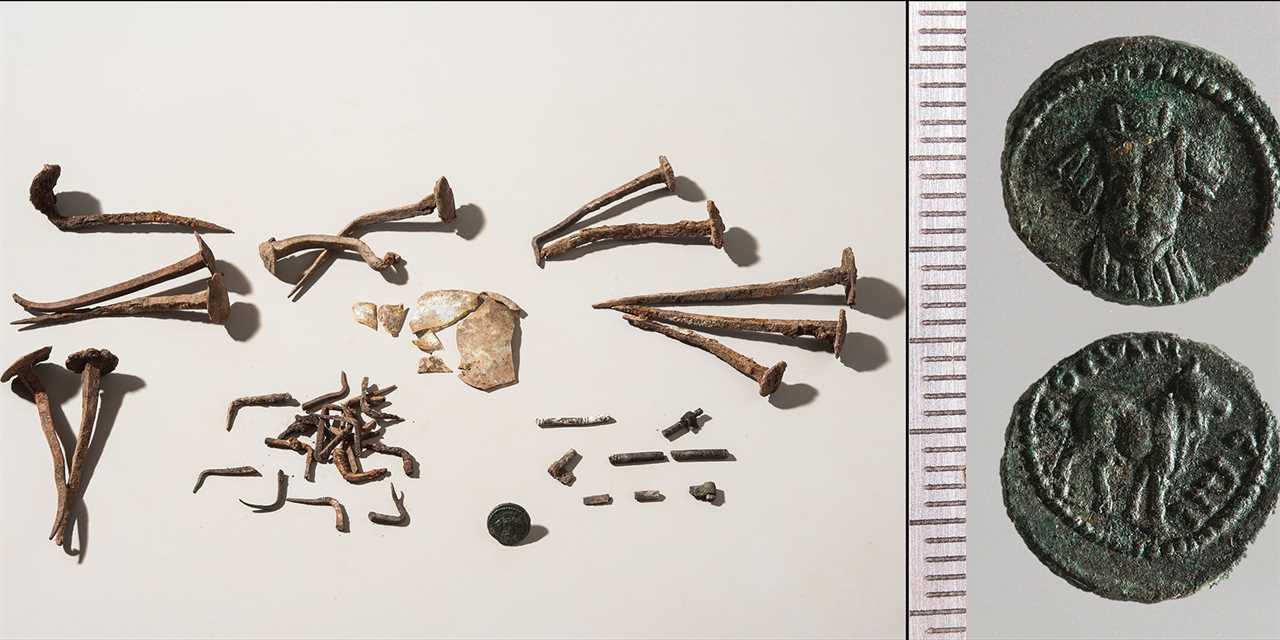Sagalassos Archaeological Research Project. Claeys et al. 2023, Antiquity, Insider
- Archaeologists have found bent nails, lime, and brick near a Roman burial site.
- These may have been charms to stop the restless dead from interfering with the living, they said.
- There are signs in burial site that the deceased person was respected at the time of their death.
"Magical" nails used to stop the dead from pestering the living have been uncovered in a 2,000-year-old Roman imperial tomb in Turkey.
Archaeologists found the 41 bent and twisted nails at the ancient site of Sagalassos, which was occupied from the third century BC to the 13th century AD.
The nails may have been used as "charms against a wide variety of evil influences," the authors said in a study published in the peer-reviewed journal Antiquity on February 21.
Researchers believe they may have been used to pin the body of the mystery adult male to the tomb so that his spirit would be unable to rise.

Sagalassos Archaeological Research Project. Claeys et al. 2023, Antiquity
The remains were also placed under a thick layer of brick and lime. This is a unique type of burial for the area, a necropolis of Sagalassos, the authors told The New York Times.
It was the only grave to use brick and lime out of about 180 or so burials that the archaeologists have uncovered.
Altogether, these rituals suggest the nails were thought to "form a magical barrier surrounding the remains of the funeral pyre," the authors said in the study.
Nails were often associated with magic

iStock / Getty Images Plus
The nails suggest ancient Romans feared the restless dead and would use various occult practices to protect themselves, archaeologists said in the study.
Nails were expensive in Roman times, so they would likely not have been discarded by mistake, lead author on the study Johan Claeys, an archaeologist at Catholic University Leuven, told The Times.
"They would have been valuable enough to be recovered if still serviceable. But they were dead nails, and the way they were distributed around the perimeter of the tomb suggests that the placement was purposeful," he said.
Nails were often seen as imbued with magical properties, Matteo Borrini, a lecturer of forensic anthropology at the Liverpool John Moore University who was not involved in the study, told Insider.
"The most common association with it is to fix something like pain," he said.
The nails were also used to ask the deceased to carry a curse into the afterlife, he said.
"In the Roman period, you write a curse against someone, you pinch with the nail, and then you fix this into the grave," he said.
"That person that will become a sort of courier and will bring this letter to the eternal spirits who will start to chase and torment and torture the person in life," he said.
The nails may also have been used to protect the body
Though nails have been used for nefarious purposes elsewhere, in this particular instance they could also have been used to protect the body.
In this burial site, there are signs to show that this person was respected at the time of their death, suggesting they wouldn't have been someone that people would have feared in life.
Cremation was a common burial rite at the time, and fragments of ceramics, glass, and traces of foods found at the site suggest this person was given the last rites common to people in that area.

Sagalassos Archaeological Research Project. Claeys et al. 2023, Antiquity
Borrini warned that a common pitfall in archaeology is to assign too much meaning to a singular grave when it's possible that the person may just have been from another culture, or have peculiar family-specific rites they were following.
"I think that the people that discovered this and the people that wrote the article have been very good with that. They are pinpointing that: 'yes, there is evidence of this. This can be magical. This can be something even more unusual, but we cannot say necessary for sure.'"
Read More
By: [email protected] (Marianne Guenot)
Title: 'Magical' nails found in a 2,000-year-old Roman tomb were meant to stop the restless dead from haunting the living, archaeologists say
Sourced From: www.businessinsider.com/roman-burial-site-magical-dead-nails-dead-rising-undead-sagalassos-2023-3
Published Date: Tue, 28 Mar 2023 11:10:05 +0000
Did you miss our previous article...
https://trendinginbusiness.business/business/6-facts-about-human-evolution-that-are-wrong
.png)





